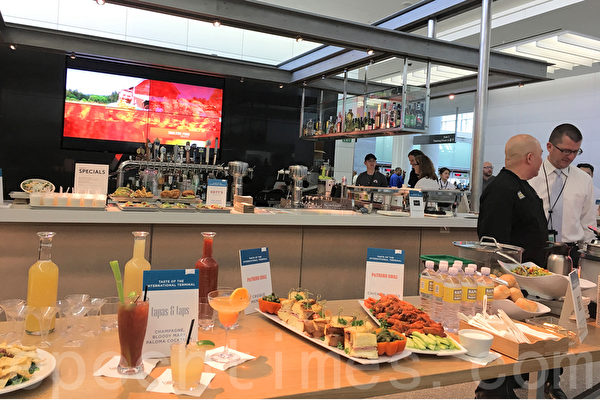**Traveling Tips: What Not to Eat or Drink at the Airport**
Traveling by plane is both exciting and nerve-wracking. After going through the check-in process and security screening, families arrive at the gate and are surrounded by various restaurants. Many people feel the urge to grab a bite to eat or something to drink, to relax a bit. However, food safety experts warn that there are four types of food and drinks you should definitely avoid at the airport to ensure a smooth journey.
According to a recent report on Parade website, the Transportation Security Administration (TSA) in the United States checks an average of 2.4 million air travelers each day in 2023. Michelle Wollenzien, an expert from the food safety consulting company Active Food Safety, points out that due to the large number of people at airports, the risk of illness among employees or improper food handling is higher, which could affect food safety.
While food safety and hygiene issues are often challenging to control, experts provide some recommendations for eating at the airport. Firstly, it’s crucial to wash your hands frequently as you come into contact with various surfaces. Secondly, when purchasing ready-to-eat items, pay attention to the packaging details and make sure the food is fresh. It’s best to consume such items promptly.
In addition to the above food safety advice, experts specifically warn passengers against consuming four types of food or beverages at the airport.
Pre-packaged sandwiches sold at airports may spoil or harbor bacteria (such as salmonella, listeria, and E. coli) if they are not stored at the correct temperature.
Wollenzien explains, “There is a small digital display in the grab-and-go area that shows the refrigerator temperature, but if the temperature in these refrigerators starts to rise, there is no alarm.”
“Therefore, if the refrigerators do not maintain the correct temperature, the bacteria will have another opportunity to grow,” she says.
Ready-to-eat sandwiches and green leafy vegetables that have not undergone a “kill step” pose a greater food safety risk because they have not been cooked at high temperatures to eliminate bacteria. To reduce the risk of infection, Wollenzien suggests opting for hot sandwiches without fresh lettuce or sprouts.
Prepackaged salads and sandwiches carry similar food safety risks.
Martin Bucknavage, Senior Food Safety Extension Associate at Penn State University’s Department of Food Science, emphasizes, “If a restaurant handles a variety of foods, it opens the door for cross-contamination in the kitchen. It’s crucial to pay attention to these operations.”
“Are the employees clean? Are they wearing clean clothes? Have they washed their hands? Is there proper separation between the cash handlers and the food preparers?” he asks.
Wollenzien adds that any place offering a variety of toppings increases the risk because employees often handle different types of food quickly. Instead, she recommends choosing hot dishes without raw vegetables.
When buying sushi at the airport, temperature control is of utmost importance. If raw fish is not properly chilled, harmful histamines can form, potentially leading to food poisoning.
“For quality and food safety reasons, fish should be kept colder than other proteins,” Wollenzien says. “Therefore, in an airport environment where it’s challenging to keep food counters at the right temperature, I would avoid raw fish.”
Soda may be refreshing, but when it comes to using soda or beverage machines at the airport, you might want to think twice. The high traffic at airports not only increases the number of bacteria on these water dispensers but also these machines may not be properly maintained.
“The nozzles of those drink machines and iced tea dispensers are hard to clean,” says Wollenzien, “so I definitely recommend opting for bottled sodas or iced teas.”

